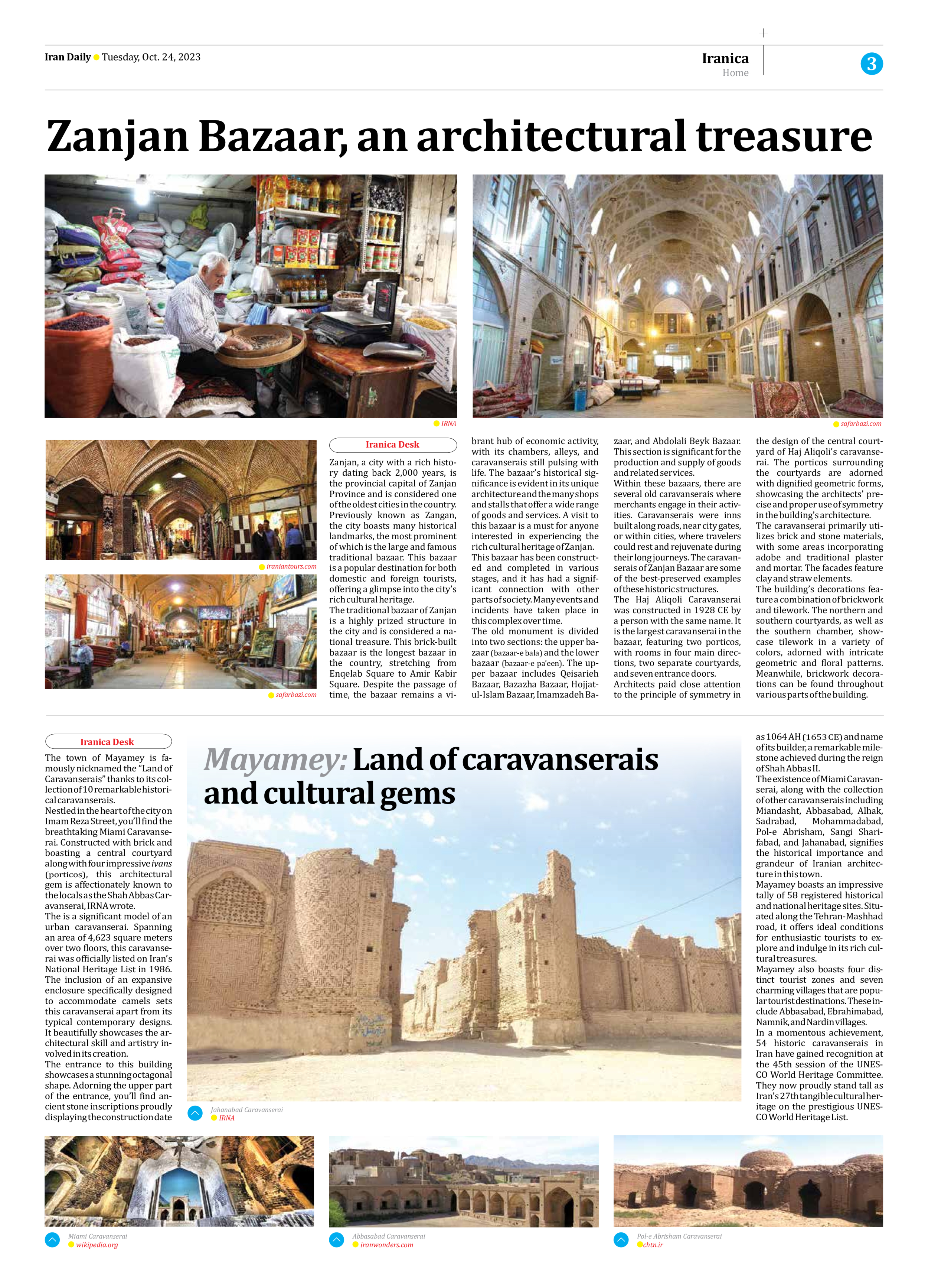
Zanjan Bazaar, an architectural treasure
Zanjan, a city with a rich history dating back 2,000 years, is the provincial capital of Zanjan Province and is considered one of the oldest cities in the country.
Previously known as Zangan, the city boasts many historical landmarks, the most prominent of which is the large and famous traditional bazaar. This bazaar is a popular destination for both domestic and foreign tourists, offering a glimpse into the city’s rich cultural heritage.
The traditional bazaar of Zanjan is a highly prized structure in the city and is considered a national treasure. This brick-built bazaar is the longest bazaar in the country, stretching from Enqelab Square to Amir Kabir Square. Despite the passage of time, the bazaar remains a vibrant hub of economic activity, with its chambers, alleys, and caravanserais still pulsing with life. The bazaar’s historical significance is evident in its unique architecture and the many shops and stalls that offer a wide range of goods and services. A visit to this bazaar is a must for anyone interested in experiencing the rich cultural heritage of Zanjan.
This bazaar has been constructed and completed in various stages, and it has had a significant connection with other parts of society. Many events and incidents have taken place in this complex over time.
The old monument is divided into two sections: the upper bazaar (bazaar-e bala) and the lower bazaar (bazaar-e pa’een). The upper bazaar includes Qeisarieh Bazaar, Bazazha Bazaar, Hojjat-ul-Islam Bazaar, Imamzadeh Bazaar, and Abdolali Beyk Bazaar. This section is significant for the production and supply of goods and related services.
Within these bazaars, there are several old caravanserais where merchants engage in their activities. Caravanserais were inns built along roads, near city gates, or within cities, where travelers could rest and rejuvenate during their long journeys. The caravanserais of Zanjan Bazaar are some of the best-preserved examples of these historic structures.
The Haj Aliqoli Caravanserai was constructed in 1928 CE by a person with the same name. It is the largest caravanserai in the bazaar, featuring two porticos, with rooms in four main directions, two separate courtyards, and seven entrance doors.
Architects paid close attention to the principle of symmetry in the design of the central courtyard of Haj Aliqoli’s caravanserai. The porticos surrounding the courtyards are adorned with dignified geometric forms, showcasing the architects’ precise and proper use of symmetry in the building’s architecture.
The caravanserai primarily utilizes brick and stone materials, with some areas incorporating adobe and traditional plaster and mortar. The facades feature clay and straw elements.
The building’s decorations feature a combination of brickwork and tilework. The northern and southern courtyards, as well as the southern chamber, showcase tilework in a variety of colors, adorned with intricate geometric and floral patterns. Meanwhile, brickwork decorations can be found throughout various parts of the building.







